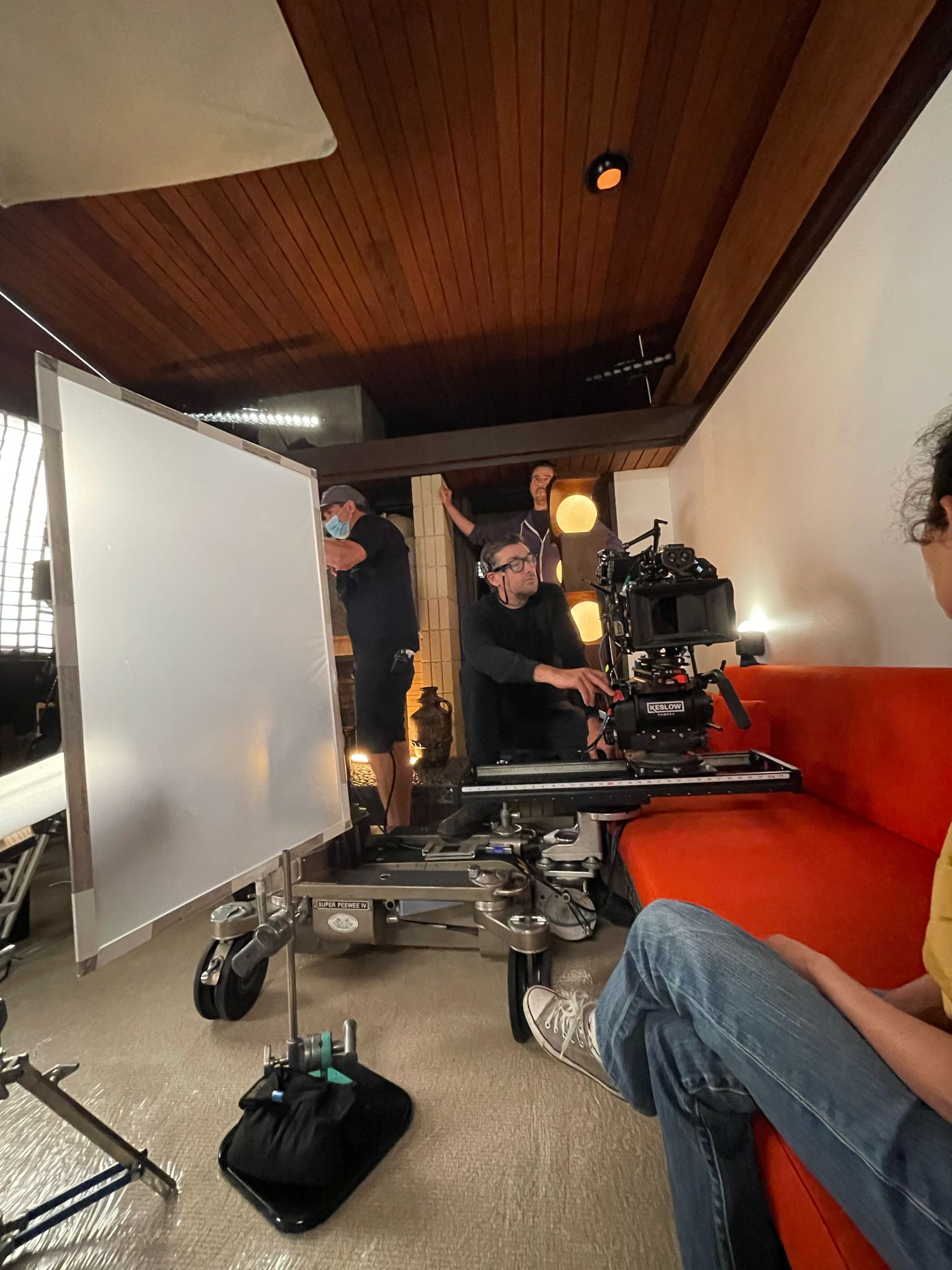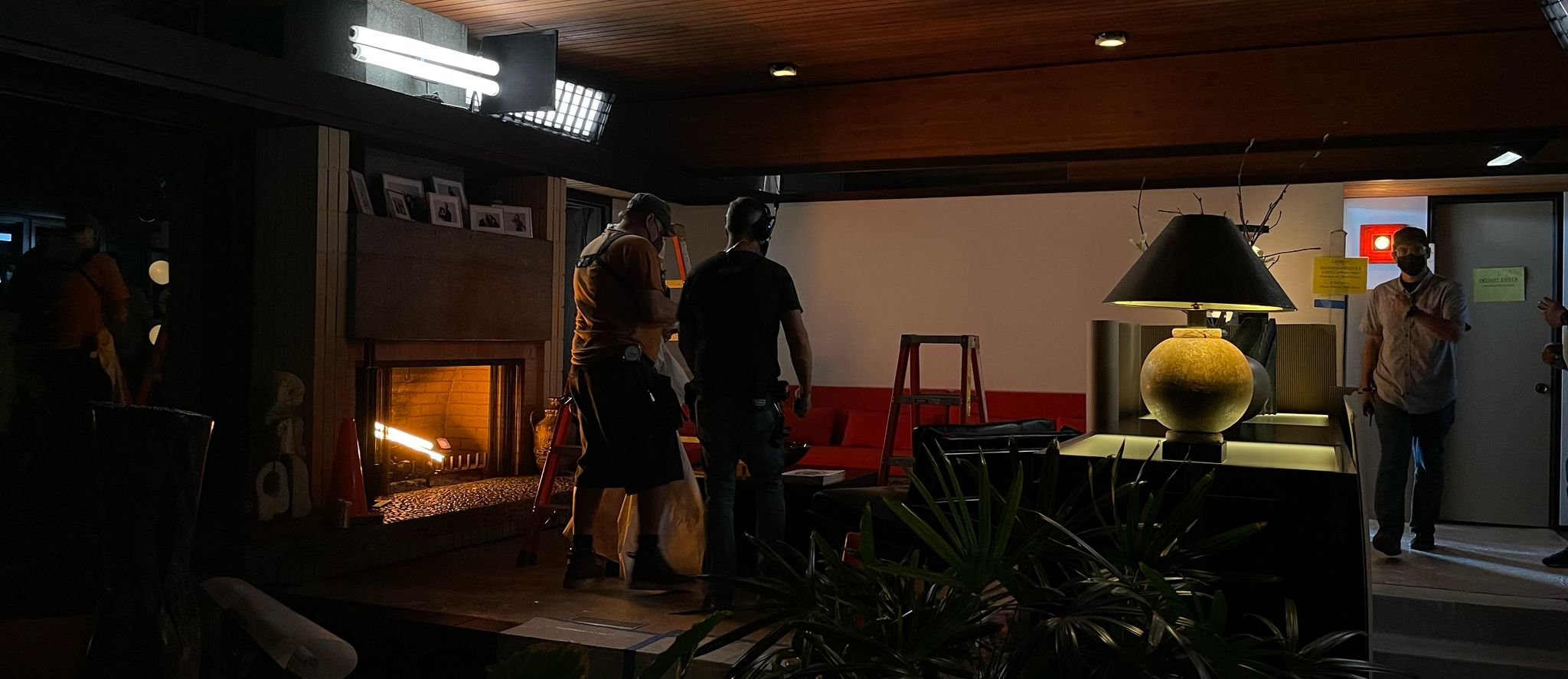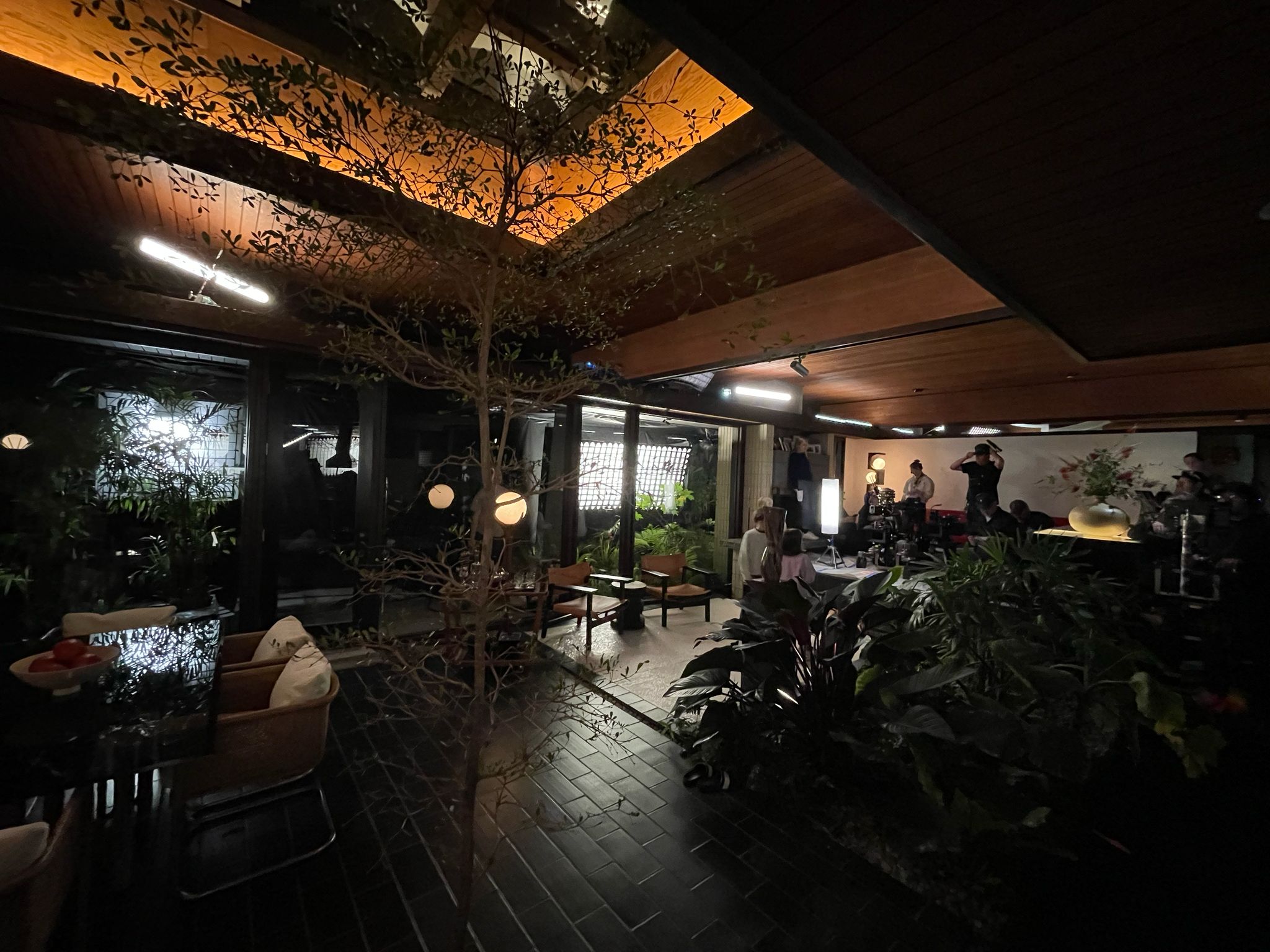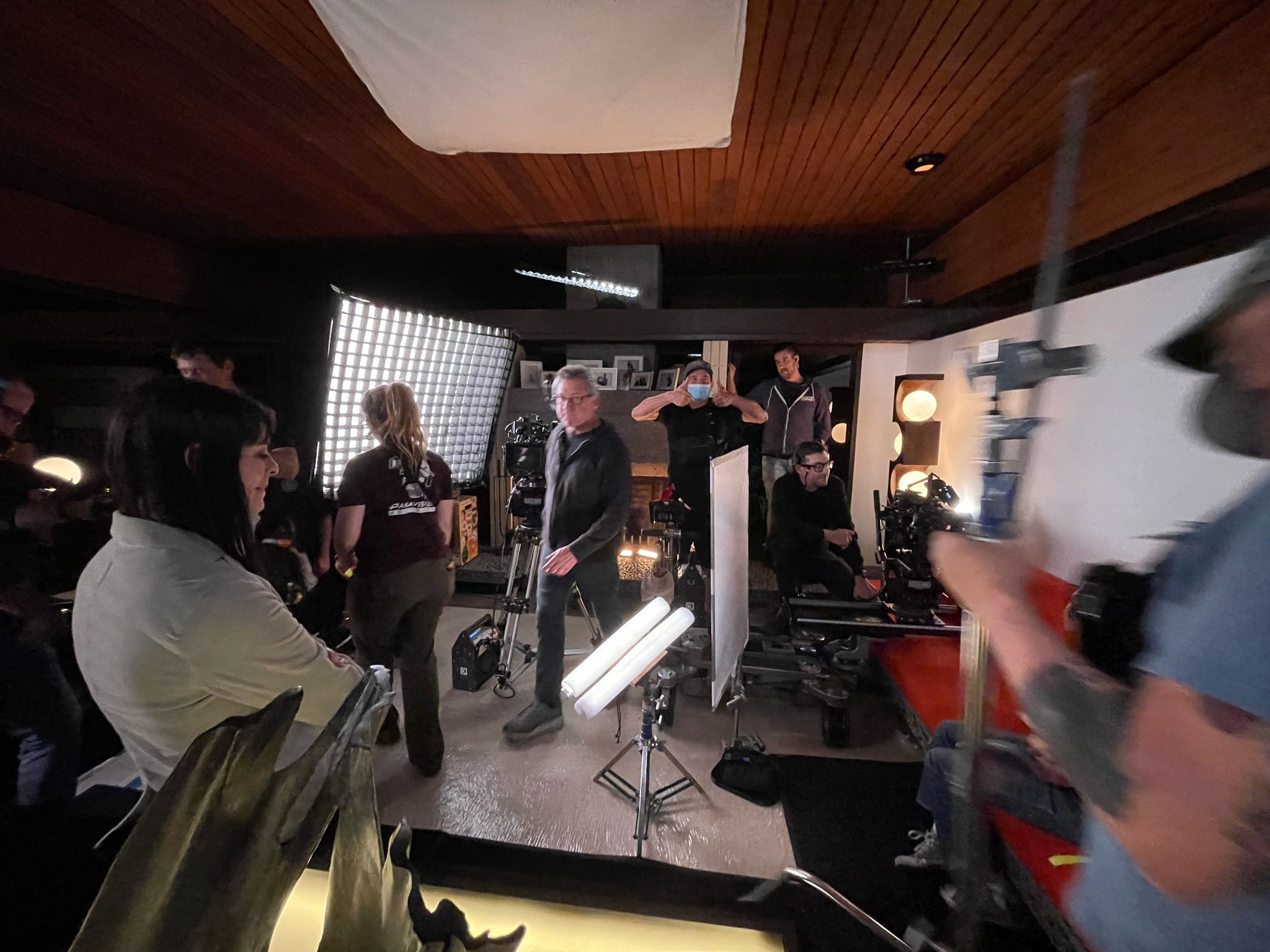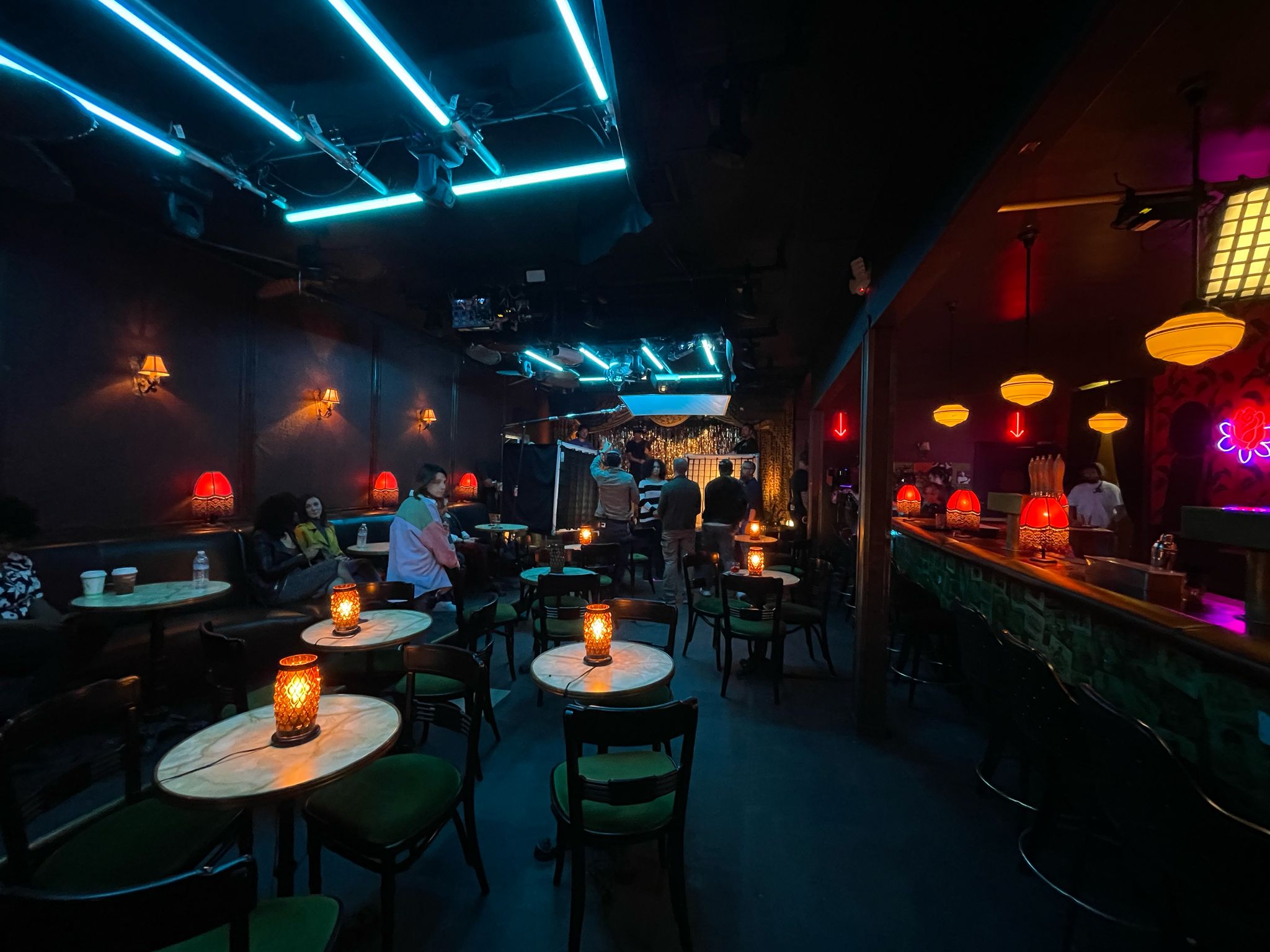 When international cinematographer Jamie Ramsay was brought on to lens independent feature film Goodrich, he faced a unique lighting challenge. Shot on location in Los Angeles, the contemporary story of a father unexpectedly dropped into single parenthood, heavily features a mid-century modern house brimming with glass and sharp architectural lines. Ramsay choose Astera lights to balance the needs of this tricky location while adhering to the strict lighting standards of the film’s A-listers, Michael Keaton and Mila Kunis.
When international cinematographer Jamie Ramsay was brought on to lens independent feature film Goodrich, he faced a unique lighting challenge. Shot on location in Los Angeles, the contemporary story of a father unexpectedly dropped into single parenthood, heavily features a mid-century modern house brimming with glass and sharp architectural lines. Ramsay choose Astera lights to balance the needs of this tricky location while adhering to the strict lighting standards of the film’s A-listers, Michael Keaton and Mila Kunis.
“Goodrich is the melancholic journey of self-discovery and forgiveness centered around the nuances of a father-daughter relationship,” describes Ramsay. Art dealer Andy Goodrich (Michael Keaton) reaches out to his 36-year-old daughter Grace (Mila Kunis) for help with her nine-year old half siblings, while he grapples with his second wife’s trip to a rehab program and the impending failure of his art gallery. Collaborating closely with director/writer Hallie Meyers Shyre, Ramsay set out to align the film’s visual tone with its emotional core.
Inspired by the architecture of the Los Angeles filming locations, the cinematographer sought ways to incorporate geometric light and shadow. “One of the chief locations in the film is Michael Keaton’s house–a beautiful mid-century modern structure built by a Japanese architect.” An incredible feat of design, the location was rich with angular surfaces that invited ever-changing daylight and reflective glass surfaces which might easily catch stands or equipment. “Because Michael’s character is an artist in his own right, I wanted the way light interacted with the house’s glass facades and hard angles to become part of the storytelling.”
Working with gaffer Alex Gaynor, the cinematographer designed a plan to make liberal use of Astera Titan and Helios Tubes. Comprised of 8 pixels which can be individually colored, flashed and programmed from the Astera App, the Titan Tube (40.7″ x 1.7″/1035mm x 43mm) and smaller Helios Tube (21.7″ x 1.7″/550mm x 43mm) are highly controllable and versatile LEDs.
“We rigged two-foot and four-foot Astera Tubes hidden across the many little pockets, angles and corners of the home,” the cinematographer describes. “They are battery-powered, and we could control everything remotely. It saved us so much time.” The compact size, wireless functionality, and versatile mounting options of the Titan and Helios Tubes allowed Ramsay and his team to discreetly illuminate scenes without intruding on the performers’ space or catching reflections off the glass surfaces.
“Cast at the level of Michael and Mila need enough time to do what they do. Which meant we needed to be resourceful with our time setting the scene.” With a tight production schedule, Astera fixtures became indispensable for creating beautiful aesthetic lighting while navigating the logistical challenges of the shoot. “With our small LED package, we could create the mood that I wanted as a cinematographer without infringing on cast with the equipment footprint.”
This setup was especially critical for night scenes, where subtle, controlled lighting was necessary to maintain the film’s intimate tone. One pivotal moment in Goodrich features Mila Kunis quietly reflecting on photographs of her father’s new family. “It’s bittersweet–as the oldest daughter, she has kind of lost her dad to these two younger kids.” Ramsay used Helios Tubes to create a gentle firelight effect, with additional hidden units providing soft cosmetic fill and subtle backlight.
The scene, rich with unspoken emotion, relies on the delicate lighting to enhance the narrative without overwhelming the performance. “The small footprint of the Astera fixtures let us build the mood without crowding the space,” Ramsay recalled. “It gave the actors freedom to move naturally, which supported the authenticity of their performances.”
The cinematographer also made use of LunaBulbs, the lightbulb lookalike LED from Astera, which screws directly into an AC-wired bulb socket for fully controllable, flicker-free lighting. With its covert shape, the crew placed LunaBulbs as on set practical fixtures, even replacing dozens of bulbs in decorative table centerpieces to illuminate a restaurant scene.
Key to executing this lighting strategy was Ramsay’s partnership with gaffer Alex Gaynor. Together, they developed a dynamic workflow, pre-rigging scenes and adjusting placements on the fly as blocking evolved. The adaptability of the Astera fixtures, combined with their quick setup time, kept the production moving smoothly despite a tight six-week schedule. “The technology worked in tandem with the creative process,” Ramsay said. “With the AsteraApp, we could tweak color temperature, brightness, and intensity in seconds. That flexibility was invaluable.”
For Ramsay, Goodrich is a testament to the power of modern lighting technology in crafting compelling visual narratives. By integrating Astera Tubes into his toolkit, he achieved a level of agility and precision that allowed the film’s emotional beats to shine through. “I believe that every space and every moment exists naturally in a perfect way. So, the way that I like to light is to find that hyperreal natural moment and try to propagate that expression.
“The right tools can make all the difference. Astera lights helped us tell this story in a way that felt honest, intimate, and visually striking.” In Goodrich, light wasn’t just a technical necessity; it was an active participant in the storytelling, shaping the atmosphere and supporting the performances. And for Ramsay, that fusion of artistry and innovation is exactly what filmmaking is all about.
Goodrich is available to watch now on MAX.
For more about Astera : astera-led.com
